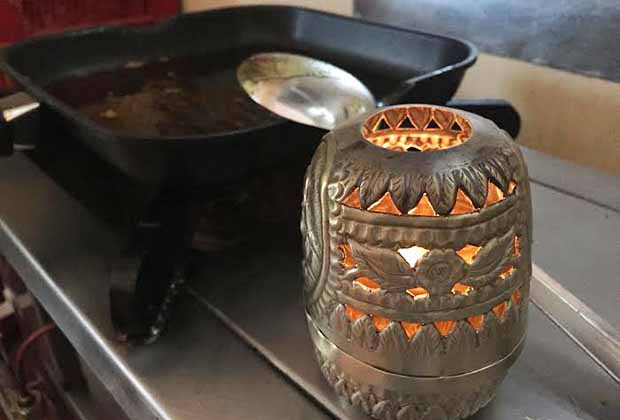The Little-Known Parsi Feast of Fire
- By Perzen PatelLoading...
- | 20 May 2015 8:24 AM GMT
 X
X
 Divo in a Bawi Bride Kitchen
Divo in a Bawi Bride Kitchen
When I moved to my larger kitchen earlier this year, a fellow caterer friend of mine wrote to me on Twitter, “May the gas burners never be turned off”.
While I’ve always worshiped fire as a Parsi, this simple blessing really touched my heart because it was so true.
Most chefs worship their knives, but I realised that we wouldn’t get very far without our stoves either!
On the same day that this epiphany struck me, #BawiMummy called me and told me about the upcoming ‘Atash nu Parab’.
Simply put, the Atash nu Parab is the feast of fire. There is no dramatic fireworks or midnight dancing.
Instead, it’s a simple celebration where all we do is clean the kitchen from top to bottom and offer thanks and prayers to the kitchen stove, arguably the most ‘hard-working’ fire in the household.
However, what makes the day special is that there is no cooking on this day and most families either go out to a restaurant or order in from one of the many Parsi caterers.
You wouldn’t want to work on your birthday, so why make ‘the fire’ work on their special day is the simple philosophy behind this tradition.
Happily, there was no rest for the Bawi Bride Kitchen fire this Atash nu Parab as we were busy dishing our first bhonu meals for the month and packing all the special orders for the day.
I did however take the time to clean the stove, light a small divo and pray that 'May our gas burners never be turned off' – literally as we have a gas cylinder shortage and figuratively too!
And of course, since no Parsi festival is complete without food we celebrated with a bowl of Sagan no Ravo, the royal Parsi version of sheera.
Here’s how you can dish out some Ravo in your kitchen too!
 Sagan no Ravo is the Parsi version of Sheera
Sagan no Ravo is the Parsi version of Sheera
Recipe for Sagan no Ravo (Serves 6)
Ingredients:
120 gm Ravo/semolina
850 ml milk
200 gm sugar
2 tbsp ghee
1 tsp nutmeg and cardamom powder
180 mgs water
Pistachio and almond flakes (not to be fried)
20 gms each charoli and raisins
20 gms sliced cashews
Method:
1. Taking a large non-stick saucepan, place the ghee and semolina and cook on a slow fire until the rave absorbs the ghee. Keep frying till it takes on a nice ivory colour.
2. Then, add the water and sugar and keep stirring until all the sugar has melted and a thick mixture forms.
3. Keep the gas on low and continue to stir. With the other hand, add in the milk in a slow trickle until all of it has been added.
4. Raise the flame and keep stirring for another 10 minutes till a thick liquid forms. Once the milk has been soaked up, taste to check that it is cooked. Sprinkle in the nutmeg and cardamom and cook on slow for 3 – 5 minutes.
5. As the Ravo thickens, it has a tendency to form small granules. Stir these with the back of your spoon, as the perfect Ravo must be smooth.
6. Once the Ravo is thick and sticky, remove from the fire and mix in the vanilla essence. Empty the Ravo into the dishes you are going to be serving it in and let it cool.
7. Meanwhile, in a small pan, heat some oil and quickly fry the charoli, pistachios, cashews, raisins and almonds – it will only take about a minute.
8. I prefer to have my Ravo without fried dry fruits but their addition is the traditional way. Once the dry fruits are ready, simply sprinkle over the Ravo and enjoy!
Photo credit: Perzen Patel
Bawi by birth and foodie by life, Perzen Patel is Mumbai’s Bawi Bride. While she didn’t know how to cook even a simple Parsi Dhandar until she got married, Perzen is now on a mission to spread happiness through Dhansak. When she is not writing, Perzen runs a full-fledged Parsi catering service, organises food experiences and also offers cooking classes.




